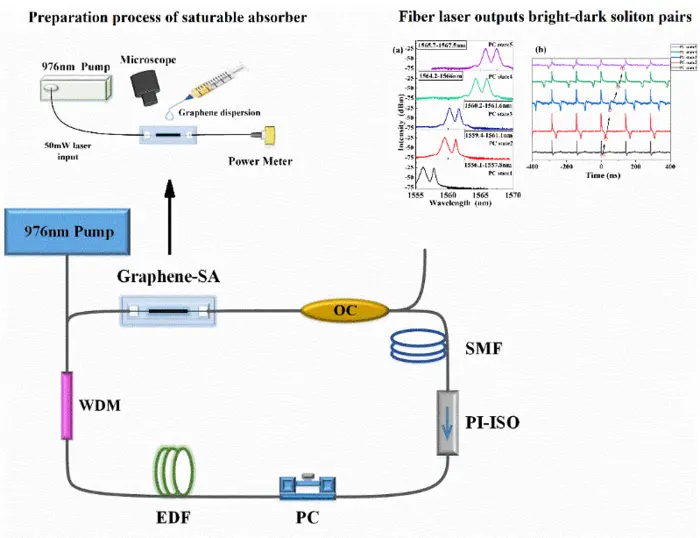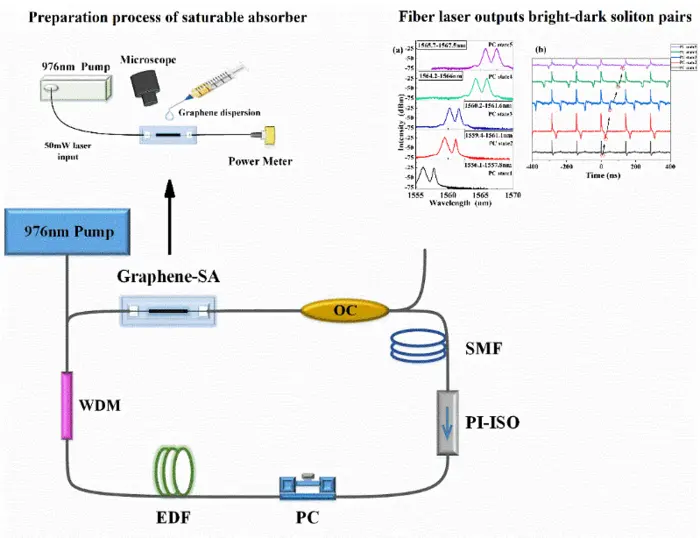Passive mode-locked technology utilizes saturable absorbers’ nonlinear absorption effect to regulate the cavity’s loss and phase to generate mode-locked pulses. Graphene has a unique energy bandgap structure, a low absorption coefficient, a considerable modulation depth, and an ultrawide operating spectral range (300-2500 nm). Graphene has become an ideal saturable absorber in the Ultrashort pulse output of fiber lasers. Researchers have succeeded in many graphene mode-locked technology experiments to achieve mode-locked pulses. Various bright pulses have been reported, and laser pulses can also be divided into bright and dark pulses based on energy distribution patterns.

Credit: Zixiong Li, Mingyu Li, Xinyi Hou, Lei Du, Lin Xiao, Tianshu Wang, Wanzhuo Ma
Passive mode-locked technology utilizes saturable absorbers’ nonlinear absorption effect to regulate the cavity’s loss and phase to generate mode-locked pulses. Graphene has a unique energy bandgap structure, a low absorption coefficient, a considerable modulation depth, and an ultrawide operating spectral range (300-2500 nm). Graphene has become an ideal saturable absorber in the Ultrashort pulse output of fiber lasers. Researchers have succeeded in many graphene mode-locked technology experiments to achieve mode-locked pulses. Various bright pulses have been reported, and laser pulses can also be divided into bright and dark pulses based on energy distribution patterns.
Researchers led by Prof. Mingyu Li at Changchun University of Science and Technology (CUST), China, are interested in graphene mode-locked fiber laser. Their idea is to prepare a graphene microfiber composite structure through the optical deposition method, which achieves an all-fiber structure and solves the problem of the low modulation depth of saturable absorbers. In this way, a graphene mode-locked fiber laser was constructed in the negative dispersion region, and the output characteristics of two switchable mode-locked pulses in the graphene mode-locked fiber laser, the effects of pump power and polarization state on bright dark soliton pairs, and dual-wavelength tunable characteristics were studied. This study will further expand the application of graphene in fiber lasers.
The work entitled “Generation of mode-locked states of conventional solitons and bright-dark solitons in graphene mode-locked fiber laser” was published on Frontiers of Optoelectronics (published on Jun. 2, 2023).
Journal
Frontiers of Optoelectronics
DOI
10.1007/s12200-023-00067-2
Article Title
Generation of mode-locked states of conventional solitons and bright-dark solitons in graphene mode-locked fiber laser
Article Publication Date
2-Jun-2023





